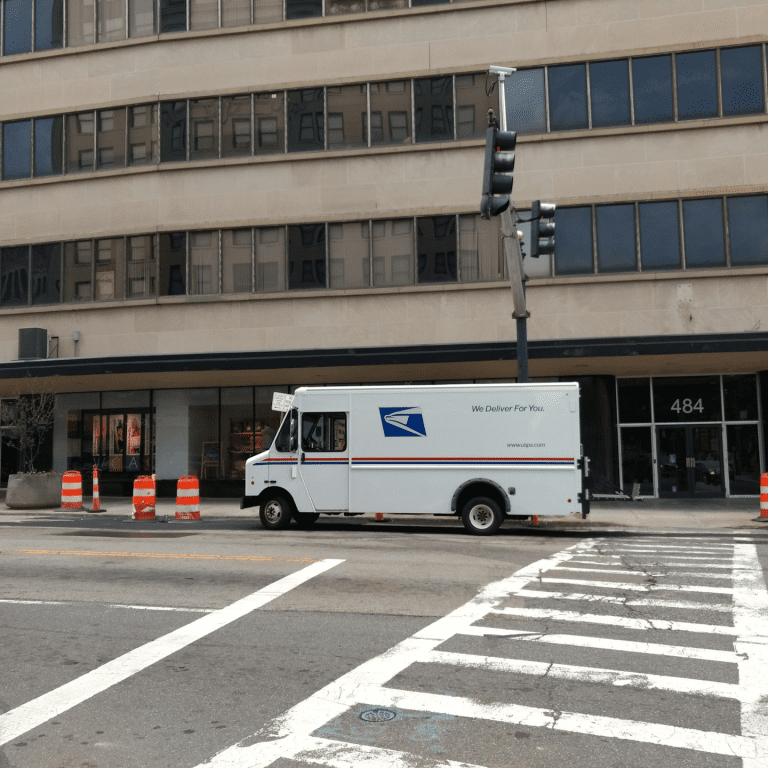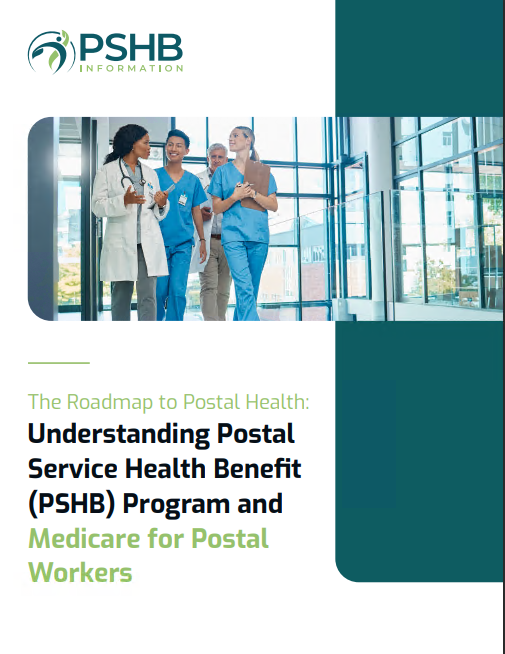Key Takeaways:
-
Understanding how government contributions impact your PSHB premiums and out-of-pocket costs can help you make informed decisions during Open Season and beyond.
-
Maximizing the benefits of government contributions ensures that you get the most value out of your health coverage while managing expenses effectively.
A New Era for Postal Service Health Benefits (PSHB)
The Postal Service Health Benefits (PSHB) program ushers in a tailored approach to health coverage for Postal Service employees, retirees, and their families. In this new landscape, government contributions play a pivotal role in shaping your premiums and out-of-pocket expenses. Whether you’re navigating annual Open Season or simply exploring your benefits, understanding these contributions is key to maximizing your health coverage. With tailored options and robust support, the PSHB program is a significant step forward in providing reliable and affordable health care to those who serve the nation.
Breaking Down Government Contributions
Government contributions significantly offset the cost of PSHB premiums. Currently, the government covers approximately 70% of the total premium cost for most enrollees. This substantial support ensures that health insurance remains affordable for eligible Postal Service employees and retirees. Here’s how it works:
-
Premium Subsidies: The government’s share of the premium is calculated as a percentage, reducing the amount you’re responsible for paying monthly.
-
Cost-Sharing Support: Contributions also influence other aspects of your plan, such as deductibles, copayments, and coinsurance rates. Lower out-of-pocket expenses can translate into significant savings over time, giving you more financial freedom to manage your household budget without compromising on essential healthcare needs.
Your Premiums Explained
When you enroll in a PSHB plan, your monthly premium reflects the government’s contribution. For instance:
-
Self Only Plans: These plans typically have the lowest premiums since they cover only the enrollee, making them an economical choice for individuals.
-
Self Plus One and Family Plans: These options cater to enrollees with dependents, resulting in higher premiums but broader coverage that accommodates the health needs of a spouse or multiple family members.
The government’s 70% contribution helps to standardize affordability across various plans, ensuring you’re not burdened with excessively high costs. This consistent support makes high-quality healthcare accessible without overwhelming your monthly budget.
Out-of-Pocket Costs: What to Expect
Out-of-pocket costs encompass expenses you’re responsible for, beyond your monthly premium. These include deductibles, copayments, and coinsurance. While government contributions don’t directly cover these costs, they indirectly influence them by making plan designs more accessible and affordable. The result? A more predictable approach to managing medical expenses.
Deductibles
A deductible is the amount you pay before your plan begins to cover services. PSHB plans offer:
-
Low-Deductible Options: These come with higher premiums but lower upfront costs for care, making them ideal for individuals and families who expect to use healthcare services frequently.
-
High-Deductible Plans: These plans have lower premiums but require more out-of-pocket spending before coverage kicks in, a good fit for those who are generally healthy and can manage higher upfront costs.
Copayments and Coinsurance
-
Copayments: Fixed fees for services, such as $30 for a primary care visit, help you understand exactly what to expect when accessing care.
-
Coinsurance: A percentage of costs you share with your plan, such as 20% of the total bill for specialist care, may vary depending on the service.
The government’s contributions help keep these amounts manageable, allowing enrollees to focus on receiving the care they need without undue financial stress.
Comparing In-Network vs. Out-of-Network Costs
PSHB plans differentiate between in-network and out-of-network providers. Staying in-network ensures lower costs, as participating providers have agreed to negotiated rates. Here’s how government contributions make a difference:
-
In-Network Care: Lower coinsurance rates (typically 10%-30%) and fixed copayments make this option more affordable for routine visits and specialist care.
-
Out-of-Network Care: Higher coinsurance rates (often 40%-50%) and non-negotiated charges increase your financial responsibility. Exploring your network options can help avoid unnecessary expenses.
Choosing in-network providers not only saves money but also simplifies the process of accessing quality care for you and your family.
How Medicare Integration Enhances PSHB Benefits
For retirees, Medicare integration further enhances the affordability of PSHB plans. If you’re enrolled in Medicare Part B, your PSHB plan may offer:
-
Waived Deductibles: Eliminating or reducing deductibles for services covered by both Medicare and your PSHB plan ensures fewer upfront expenses.
-
Lower Copayments: Reduced out-of-pocket costs for routine care, such as check-ups or diagnostic tests.
-
Prescription Drug Savings: Automatic enrollment in a Medicare Part D Employer Group Waiver Plan (EGWP) reduces prescription costs significantly, making medications more accessible.
By coordinating benefits, Medicare and PSHB contributions work together to minimize your overall expenses. This collaboration ensures that retirees enjoy seamless and cost-effective healthcare.
Making the Most of Open Season
Open Season is your annual opportunity to evaluate and adjust your PSHB coverage. To make informed decisions, consider these tips:
-
Review Premium Changes: Check for updates to government contributions and premium amounts for the coming year. Ensure your chosen plan aligns with your financial goals.
-
Compare Out-of-Pocket Costs: Analyze deductibles, copayments, and coinsurance rates to determine the best value for your needs. Use available plan comparison tools to streamline this process.
-
Consider Medicare Enrollment: If you’re eligible, enrolling in Medicare Part B can significantly enhance your PSHB plan’s affordability and coverage, especially for those with ongoing medical needs.
Taking the time to carefully review your options ensures that you’re making the most of the benefits available to you.
Special Considerations for Families
If you’re covering dependents under a Self Plus One or Family plan, government contributions remain consistent, ensuring affordability. However, out-of-pocket costs can vary based on family size and healthcare needs. To optimize your benefits:
-
Utilize Preventive Services: Most PSHB plans cover preventive care at no cost, reducing long-term healthcare expenses by addressing issues early.
-
Track Annual Spending: Monitor family healthcare costs to anticipate future needs and adjust your plan during Open Season. Being proactive can save you both time and money.
Navigating High-Deductible Health Plans (HDHPs)
HDHPs are a popular option for those seeking lower premiums. These plans pair well with Health Savings Accounts (HSAs), allowing you to:
-
Save Pre-Tax Dollars: Use HSA funds to pay for qualified medical expenses, from doctor visits to prescriptions.
-
Accumulate Savings: Unused HSA funds roll over annually and can be invested for future healthcare needs, offering long-term financial security.
Government contributions to premiums make HDHPs an appealing choice for cost-conscious enrollees, particularly those who prioritize saving for future healthcare expenses.
How PSHB Contributions Compare to FEHB
The transition from the Federal Employees Health Benefits (FEHB) program to PSHB in 2025 highlights several distinctions:
-
Targeted Plans: PSHB plans are tailored to Postal Service employees, offering specialized coverage options that address their unique needs.
-
Consistent Contributions: Government contributions under PSHB remain aligned with FEHB levels, ensuring continuity in affordability across both programs.
-
Enhanced Integration: PSHB plans integrate more closely with Medicare, providing additional savings for retirees and reducing the complexity of managing multiple coverage sources.
What Happens If You Don’t Act?
Failing to enroll in a PSHB plan during Open Season may lead to automatic enrollment in a default plan. While this ensures continuous coverage, it’s unlikely to be optimized for your specific needs. Taking the initiative to review and actively select your plan ensures you fully leverage government contributions and maximize your benefits.
The Bottom Line: Leveraging Government Contributions for Maximum Value
Government contributions are the backbone of affordability in the PSHB program. By understanding their impact on your premiums and out-of-pocket costs, you can make informed decisions, whether you’re choosing a plan for the first time or reevaluating your coverage during Open Season. Taking the time to explore your options and customize your plan ensures you’re getting the most from your benefits, now and in the years to come.










